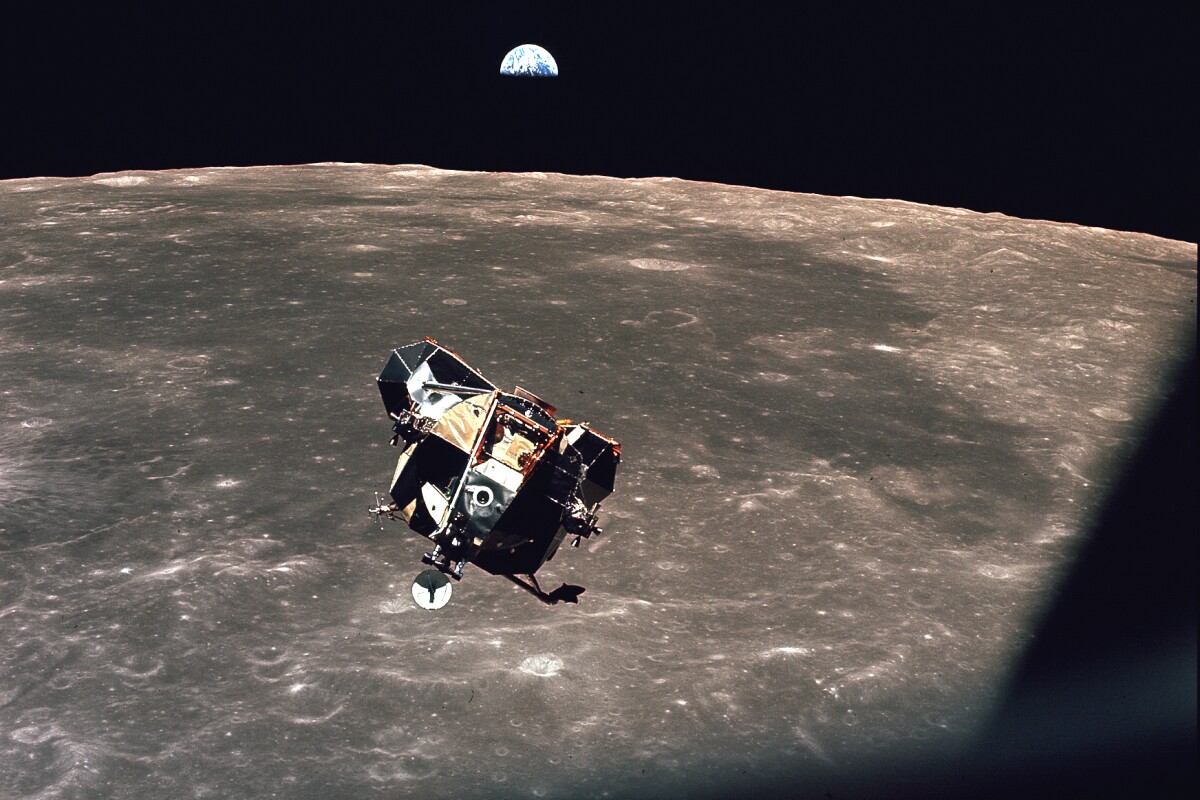A new mathematical study suggests that the abandoned Ascent Stage of the Apollo 11 mission's Eagle Lunar Module (LM), long believed to have crashed on the Moon in 1969, may be circling our largest natural satellite in a stable orbit.
From the time that the Apollo 11 returned to Earth until today, what happened to the spacecraft and the giant Saturn V rocket that lifted them into space seemed settled. The Saturn V S-IC First Stage and the S-II Second Stage had impacted in the Atlantic Ocean during the launch, the S-IVB Third Stage went into a heliocentric orbit, the Descent Stage of the LM was still on the Moon, the Service Module burned up in the Earth's atmosphere, the Command Module was in the Smithsonian, and the LM Ascent Stage crashed on the Moon.
Or so it was thought. The snag is that NASA is notorious for not bothering to keep tabs on its spacecraft after they've served their purpose. So long as they are in compliance with the law, pose a danger to no one, and don't constitute a hazard to navigation, the space agency hasn't had much curiosity as to what ultimately happened to them.
In the case of the Apollo 11 Ascent Stage, which carried Neil Armstrong and Buzz Aldrin from the surface of the Moon to rendezvous with the Command Module Columbia, it was assumed that after it was jettisoned, its orbit became unstable and more and more elliptical until it ultimately crashed into the Moon.
The only problem is that the Ascent Stage was never tracked and its impact was never recorded. It was simply assumed that it had hit some unknown location of the lunar surface. However, since 1969, there have been a number of other missions to the Moon, including the Gravity Recovery and Interior Laboratory (GRAIL) mission, where two orbiters flying in formation made high resolution maps of the Moon's gravitational field and the irregularities caused by mass concentrations, or mascons, beneath the surface.
Using this data, independent researcher James Meador tried to make an accurate plot of the orbit of the Apollo 11 Ascent Stage in the hope of predicting where it had struck the lunar surface. Before beginning his analysis, he looked at the available numbers regarding the spacecraft's orbit and made corrections. In one case, NASA's official number was out by seven degrees, which was so far off it had to be a typo. In addition, he accounted for the pressure from sunlight and introduced random variables to simulate unknown forces over time with parameter limits.
Using the GRAIL gravity model and the General Mission Analysis Tool (GMAT) simulator, Meador expected to find the LM's orbit destabilizing very quickly. What he found – and was verified by a third party using different methods – was that the Ascent Stage had a feedback mechanism that caused the orbit to stabilize itself over a period of every 24 days. When he ran the simulation forward, the orbit remained stable until the present day.
The upshot of this is that the Ascent Stage may still be in orbit now and could be observed when it is in the right position in relation to the Earth and the Sun. However, Meador emphasizes that the LM was never intended to be very robust. Designed to operate for only about 10 days, it was also filled with batteries and fuel tanks, which could have exploded years ago, either destroying the craft or sending it off on a new trajectory.
The non-peer-reviewed paper (PDF) was submitted to Planetary and Space Science.





